-
Doctors
-
Specialities & Treatments
Centre of Excellence
Specialties
Treatments and Procedures
Hospitals & Directions HyderabadCARE Hospitals, Banjara Hills CARE Outpatient Centre, Banjara Hills CARE Hospitals, HITEC City CARE Hospitals, Nampally Gurunanak CARE Hospitals, Musheerabad CARE Hospitals Outpatient Centre, HITEC City CARE Hospitals, Malakpet
HyderabadCARE Hospitals, Banjara Hills CARE Outpatient Centre, Banjara Hills CARE Hospitals, HITEC City CARE Hospitals, Nampally Gurunanak CARE Hospitals, Musheerabad CARE Hospitals Outpatient Centre, HITEC City CARE Hospitals, Malakpet Raipur
Raipur
 Bhubaneswar
Bhubaneswar Visakhapatnam
Visakhapatnam
 Nagpur
Nagpur
 Indore
Indore
 Chh. Sambhajinagar
Chh. SambhajinagarClinics & Medical Centers
Book an AppointmentContact Us
Online Lab Reports
Book an Appointment
Consult Super-Specialist Doctors at CARE Hospitals

Brain Aneurysm
Brain Aneurysm
Best Hospital for Brain Aneurysm Surgery in Hyderabad
What are brain aneurysms?
A brain aneurysm is an artery deformity where a spot in the artery of the brain bulges and gets filled with blood. It is also called a cerebral aneurysm or intracranial aneurysm.
A brain aneurysm can occur at any age and may be life-threatening if not treated on time. If it ruptures or bursts, it can cause an emergency resulting in brain damage, stroke, or death.
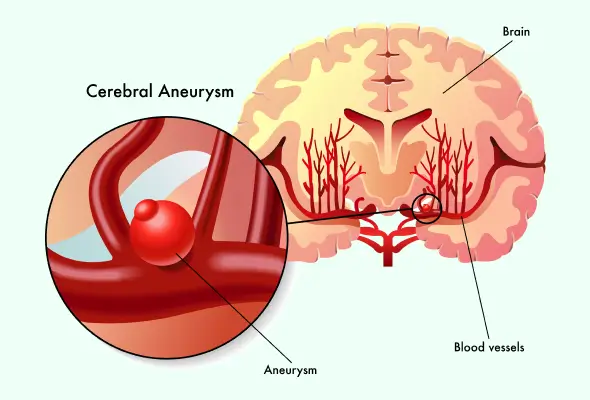
Symptoms of brain aneurysms
A brain aneurysm is unpredictable. It might not show any symptoms until it bulges or ruptures. Large and ruptured aneurysms show definite symptoms and need immediate medical care. The symptoms change whether the aneurysm has ruptured or not.
Unruptured aneurysms
These aneurysms are small and don’t show symptoms at the early stage until and unless it becomes large and presses the nearby nerves and tissues. However, it shows some minute symptoms such as,
-
Headache and pain above and behind the eye.
-
Numbness and weakness affect one side of the face.
-
Blurred or double vision.
-
Dilated pupil.
Leaking aneurysms
These aneurysms leak or release some amount of blood in the brain. If an individual suffers from a leaking aneurysm he can experience sudden and severe headaches. These headaches are called sentinel headaches.
Sentinel headaches occur after the rupture of an aneurysm. In this condition, a patient should seek immediate medical help.
Ruptured aneurysms
The symptoms of ruptured aneurysms include,
-
A sudden and severe headache.
-
Sensitivity to light.
-
Neck stiffness.
-
Double or blurred vision.
-
Drooping eyelid.
-
Trouble in speaking.
-
Change in mental state.
-
Trouble in walking and dizziness.
-
Vomiting or nausea.
-
Seizures.
-
Loss of consciousness.
Ruptured aneurysms are life-threatening. If you notice such symptoms, consult the doctor at the best Hospital for Brain Aneurysm Surgery in Hyderabad.
Causes of brain aneurysms
Brain aneurysms occur due to structural changes in the artery walls of the brain. These changes make the artery thin and weak. Usually, the deformity occurs due to thinning of the wall, but it can also occur due to inflammation and trauma without thinning the wall.
The exact causes of aneurysms are still unknown, but it’s believed that the following factors can promote their development.
-
Elastic tissue breaks down within the artery.
-
Stress in an artery due to blood flow.
-
Changes in artery tissues due to an increase in inflammation.
Also, brain aneurysms are more likely to occur where an artery branches in several directions. This is because arteries are weak in these areas. These can also be present from birth. However, they most often develop with time.
Risk factors for brain aneurysms
Several factors can increase the risks of developing brain aneurysms. These include-
-
Age- Aneurysms are mostly diagnosed in individuals aged 40 years or above.
-
Sex- Women are more likely to develop aneurysms than men.
-
High blood pressure- Untreated hypertension or high blood pressure exert extra force on the walls of the artery that may lead to aneurysms.
-
Smoking- Smoking can increase blood pressure causing damage to blood vessels.
-
Drug misuse and alcohol consumption- Consumption of alcohol and drugs like amphetamine and cocaine can increase blood pressure and lead to inflammation in arteries.
-
Head injury- A severe head injury can cause damage to blood vessels in the brain causing the formation of an aneurysm. However, this happens only in rare cases.
-
Genetic conditions- Some genetic conditions can impact or damage the structure of arteries, and can lead to aneurysms. Some examples are- autosomal dominant polycystic kidney disease (ADPKD), Marfan Syndrome, Ethlers-Danlos Syndrome.
-
Congenital conditions- There might be chances that blood vessels are weak from birth. Moreover, congenital conditions such as arteriovenous malformation or coarctation (narrowing of the aorta) can also contribute to aneurysms formation.
-
Infections- Certain types of infections can damage arteries developing aneurysms. Infectious aneurysms are also called mycotic aneurysms.
Risk factors for aneurysm rupture
The risk factors for aneurysm rupture are associated with the features of the aneurysm itself.
The risk of rupture is increased in aneurysms that are-
-
Large
-
Have grown large with time.
-
Located in specific arteries, precisely in anterior and posterior communicating arteries.
Individual factors increasing rupture risks include;
-
Family history of ruptured aneurysms.
-
High blood pressure
-
Smoking
-
Intense exercise
-
Soda or coffee consumption
-
Nose blowing
-
Intense anger
-
Sexual intercourse
Diagnosis of brain aneurysms
Detecting brain aneurysms is difficult until they rupture. The doctors can detect them with some tests based on the family history, symptoms, health issues, etc.
These tests include-
-
Magnetic Resonance Imaging (MRI)- An MRI uses magnetic fields and radio waves to form images of the brain. Generally, it is used to find and evaluate unruptured aneurysms. Magnetic Resonance Angiography (type of MRI) is used to determine the size, location and shape of an aneurysm.
-
Computed Tomography (CT Scan)- CT scan can take numerous X-rays for image formation. These images are used to find bleeding in the brain due to ruptured or leaking aneurysms.
-
Digital Subtraction Angiography (DSA)- In this, a catheter is inserted in the artery through the groin and then is threaded to the brain. In the brain, it releases a special dye. A computer uses X-ray images to form images before and after the release of dye for analysis.
Treatment for brain aneurysms
The treatment for brain aneurysms depends on numerous factors like-
-
Size and location of the aneurysm.
-
Age
-
Overall Health
-
Family medical history
-
Risk of rupture
The treatment may vary from surgical procedures to lifestyle changes.
Surgery
Surgery is done when the brain aneurysm is accessible. It cuts the flow of blood to the aneurysm preventing it from growing, reoccurring and rupturing.
Types of aneurysms surgical methods
-
Surgical clipping- In this, the flow of blood to the aneurysm is cut through a tiny metal clip. This seals the aneurysm preventing it from further development or rupture. It is done in open brain surgery under general anaesthesia.
-
Endovascular coiling- It is less invasive than surgical clipping. During the process, a catheter is inserted into the artery through the groin and threaded to the aneurysm. Then, it released tiny wire coils into the aneurysm blocking blood flow. Aneurysms treated through this process can reoccur, therefore the process is conducted more than once.
Lifestyle Changes
Lifestyle changes can help to manage aneurysms and prevent them from rupturing.
These changes include-
-
Taking proper medications and other important steps to treat hypertension.
-
Quitting smoking
-
Having a balanced diet that contains fresh fruits and veggies, lean metals, whole grains, low-fat dairy products.
-
Exercising daily (not intense exercises).
-
Reducing the consumption of caffeine and alcohol.
-
Managing weight.
-
Avoiding the use of drugs such as amphetamines and cocaine.
Complications of brain aneurysms
Ruptured brain aneurysms can cause hemorrhagic stroke. This condition occurs when blood leaks into the brain or in the space between the skull and brain (subarachnoid space). Bleeding or leakage from a ruptured brain aneurysm can cause serious life-threatening complications. It can cause a coma or brain damage if left untreated. Death can also happen in some cases.
The complications of a ruptured brain aneurysm include-:
-
Seizures- They can occur during or right after the rupture of the aneurysm.
-
Vasospasm- It occurs when the blood vessels in the brain become narrow, decreasing or cutting off blood flow in the brain. The risks of vasospasm are highest within 24 hours of the rupture.
-
Hydrocephalus- This occurs when cerebral spinal fluid (CSF) circulation is disrupted and is accumulated in the brain leading to swelling. This condition can occur within the days of the aneurysm rupture. It can also be a long-term complication of the condition. In some cases, a shunt (drainage system) is required to drain the fluid. Moreover, after a rupture, the aneurysm can rupture again, even after treatment at any time. Therefore, you must consult the best hospital for brain aneurysm surgery in Hyderabad.
How can CARE Hospitals help?
Our well-trained medical staff provides minimally invasive procedures to treat brain aneurysms. We as the best Hospital for Brain Aneurysm Surgery in Hyderabad, and we provide complete support and assistance to help patients get back to their normal lives. Also, we follow international treatment protocols to provide the best possible results.
Our Doctors
-

Dr. Tarun Gandhi
MS, FVES
Vascular & Endovascular Surgery
View More -

Dr. P C Gupta
MBBS, MS, FICA, FIVS (Japan)
Vascular & Endovascular Surgery
View More -

Dr. Ashish N Badkhal
MBBS, MS, MCh
Vascular Surgery
View More -

Dr. Ashok Reddy Somu
MBBS, MD, FVIR
Vascular & Interventional Radiology
View More -

Dr. B. Pradeep
MBBS, MD, DNB, FRCR CCT (UK)
Vascular & Interventional Radiology
View More -

Dr. Gnaneswar Atturu
MBBS, MS, DNB, MRCS, FRCS, PgCert, Ch.M, F.I.P.A, MBA, PhD
Vascular & Endovascular Surgery
View More -

Dr. Mustafa Razi
MBBS, MD
Vascular & Interventional Radiology
View More -
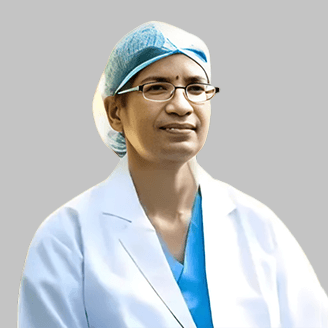
Dr. N. Madhavilatha
MBBS, MS, PDCC
Vascular & Endovascular Surgery
View More -

Dr. Radhika Malireddy
MBBS, DNB (General Surgery), DrNB (Plastic & Reconstructive Surgery), Post-Doctoral Fellowship in Diabetic Foot Surgery
Vascular & Endovascular Surgery
View More -

Dr. Rahul Agarwal
MBBS, DNB (General Surgery), FMAS, DrNB (Vasc. Surg)
Vascular & Endovascular Surgery
View More -
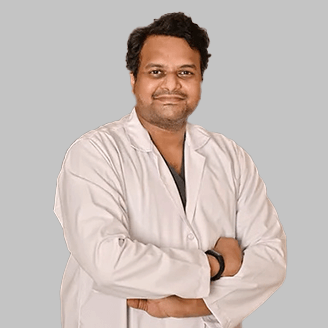
Dr. Rajesh Poosarla
MBBS, MD, DNB, DM (Gold Medalist), EBIR, FIBI, MBA (HA)
Interventional Radiology
View More -

Dr. S. Chainulu
MBBS, DNB (Radio-Diagnosis)
Vascular & Interventional Radiology
View More -
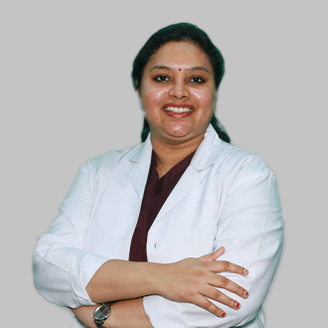
Dr. Sailaja Vasireddy
MBBS, DrNB (CTVS)
Cardiac Surgery, Vascular Surgery
View More -
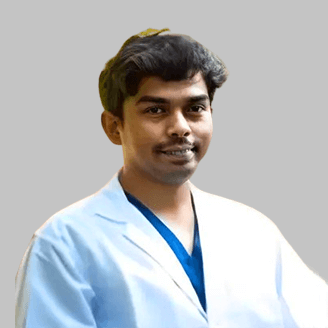
Dr. Santhosh Reddy K
MBBS, MD
Radiology
View More -

Dr. Sudheer Gandrakota
MBBS, DNB, CTVS
Cardiac Surgery, Vascular Surgery
View More -

Dr. Surya Kiran Indukuri
MBBS, MS (General Surgery), DrNB (Vascular & Endovascular Surgery)
Vascular & Endovascular Surgery
View More -

Dr. V. Apoorva
MBBS, MS (General Surgery), DrNB Vascular surgery
Vascular & Endovascular Surgery
View More -

Dr. Vamsi Krishna Yerramsetty
MBBS, DNB, FIVS
Vascular & Endovascular Surgery
View More -

Dr. Venugopal Kulkarni
MBBS, MS, MRCS, FRCS
Vascular & Endovascular Surgery
View More -

Dr. Vivek Lanje
MBBS, DNB (General Surgery), Mch (Cardiovascular & Thoracic Surgery)
Vascular Surgery
View More
Frequently Asked Questions
Still Have a Question?

